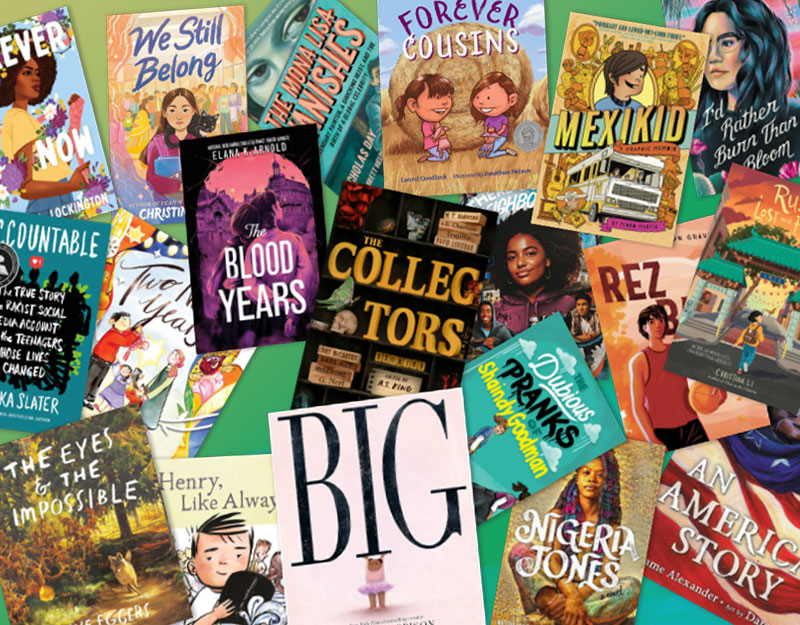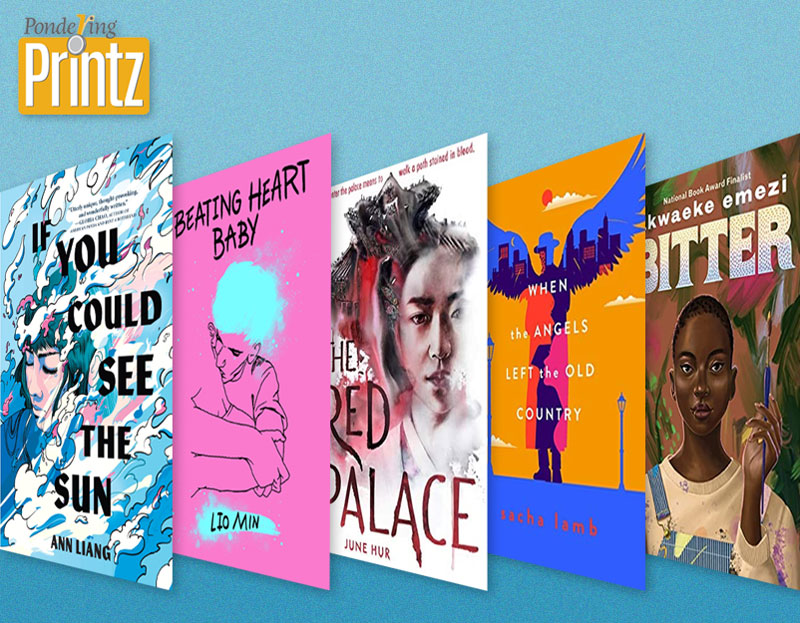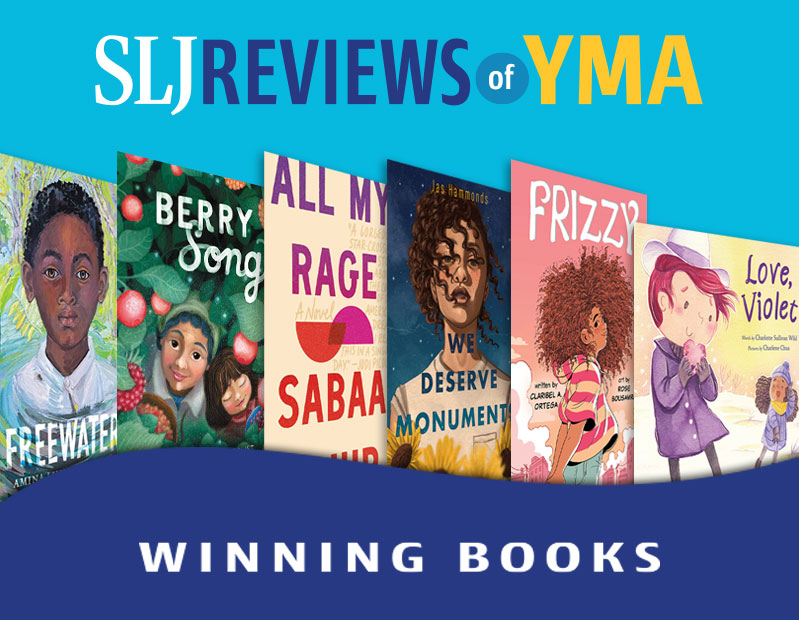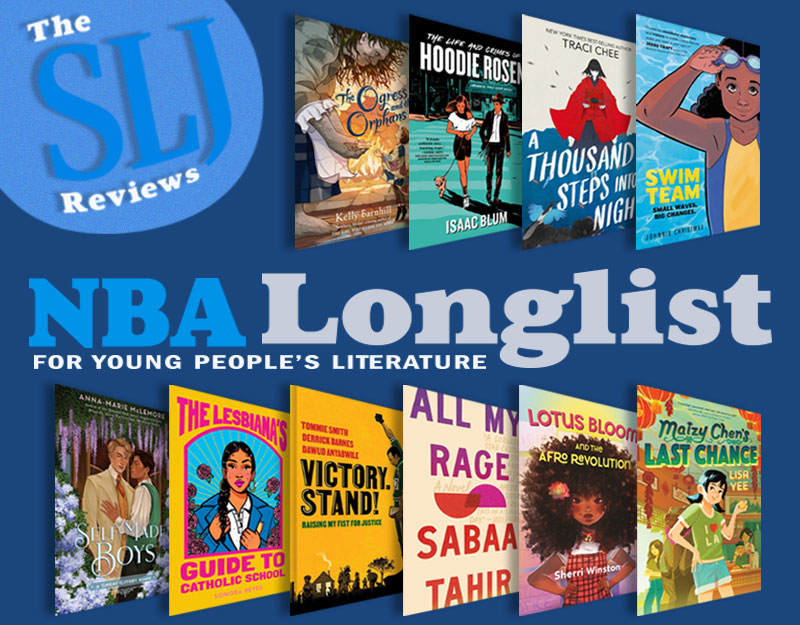Teaching About September 11th and its Aftermath: In the Shadow of the Fallen Towers
In the Shadow of the Fallen Towers: The Seconds, Minutes, Hours, Days, Weeks, Months, and Years after the 9/11 Attacks

Written and illustrated by Don Brown
Published by Etch, Houghton Mifflin Harcourt, 2021
ISBN: 978-0-358-22357-3
Grades 7 and Up
Book Review
“In the shadow of the fallen towers, there is grief and sadness. Yet it is a shared grief and sadness that maybe, just maybe, binds wounds, slackens pain, and shores up the country.” So concludes Don Brown’s latest work of graphic nonfiction, In the Shadow of the Fallen Towers. Dedicated “to all of those who are suffering as a consequence of their work at the Pile,” Brown offers tweens and teens a more detailed portrayal of the events of September 11th and its aftermath than in his 2011 illustrated America is Under Attack: September 11th 2001: The Day the Towers Fell. The book immerses the reader immediately in the early moments of the attack on September 11, 2001. Captions are filled with clear, crisp, uncomplicated text. Illustrations move the visual narrative forward across panels and pages, punctuated by speech balloons containing direct quotes meticulously sourced. The opening end pages reveal the towers as they were in the early morning hours of September 11, 2001; the concluding end pages reveal the Freedom Tower, now standing watch over lower Manhattan. Brown zooms in on specific moments of terror, selflessness, collaboration, and grace, and zooms out to reveal the day in the context of its aftermath, concluding the book on the one-year anniversary. He complicates his own conclusion with the page turn, discussing in his author’s note the tensions and challenges of the last twenty years for September 11th survivors, the U.S. military, Muslim-Americans, the people of Iraq and Afghanistan, and all citizens and residents of the United States. Amidst the global COVID-19 pandemic, we mark the 20th anniversary of the attacks. In the Shadow of the Fallen Towers offers tweens and teens the opportunity to use our historic grief to see anew – right now, when we need it most – our collective responsibility towards one another.
Teaching Ideas and Invitations
Note our Readers: These ideas are not meant to be prescriptive. Choose one. Choose more. It’s up to you. Some ideas are bigger and will take a number of days to complete. Some are shorter. You can also choose to complete one part of a teaching idea, but not the whole thing. It’s up to you!
ADVERTISEMENT
ADVERTISEMENT
Writer’s Craft Duet: Returning to September 11th: Back in 2011, Don Brown wrote America is Under Attack: September 11th 2001: The Day the Towers Fell. In this illustrated book, Brown introduces the events of September to an intermediate grade audience (roughly grades 3-5). Have your students consider what the book reveals about that historic day, and what it doesn’t. This can serve as a scaffold for reading the young adult graphic nonfiction and ground students in some basic knowledge of the day. Next, have students read In the Shadow of the Fallen Towers. What is different in Brown’s writing style? In his illustrative style? Are those differences due to time? To the shift in age of his audience? The format? Have students discuss what might make an author return to the same subject again. What value is there?
Writer’s Craft: Graphic Nonfiction. After reading In the Shadow of the Fallen Towers, have students discuss what makes this book a work of nonfiction. Guide students to consider the balance between the captions, which contain the primary text, and the speech balloons within the panels. Show students the source notes in back matter, in which Brown cites the source of every quote used in every speech balloon. For additional support on terminology for graphic books, this resource from Read, Write, Think may be helpful. After students have considered the ways in which this book is nonfiction, offer them the opportunity to read other graphic nonfiction from your school and public library. What similarities and differences do your students observe? Are all speech balloons sourced the way Brown’s are? If not, why not? Is invented dialogue permissible in nonfiction? Where do your students draw the line? If time allows, offer your students the opportunity to create short pieces of graphic nonfiction (such as a two-page spread) on a topic or event that they are interested in researching.
Writer’s Craft Solar System: Don Brown Graphic Nonfiction Author Study. Over the last decade, Don Brown has been creating a range of powerful works of young adult graphic nonfiction that rivet readers with dramatic story arcs, visual narratives, and precise sourcing of materials. Provide an opportunity for students to explore his written and illustrative nonfiction style through an author/genre study. Allow students to self-select from the following works of graphic nonfiction: In the Shadow of the Fallen Towers, Fever Year: The Killer Flu of 1918: A Tragedy in Three Acts, Drowned City: Hurricane Katrina and New Orleans, The Great American Dust Bowl, andThe Unwanted: Stories of the Syrian Refugees. You might also want to consider Brown’s other 2021 title, A Shot in the Arm, about the history of vaccines; an outlier, it uses a first person narration from a historical figure to convey the history of vaccines over time, rather than deeply investigating one period of time like the other books. Use the previous teaching idea above to guide students’ exploration of Brown’s work in their book-based groups. Have them consider how Brown makes connections between the historical past and contemporary events. Next, place students in jigsawed groups to compare and contrast representations and stylistic choices. If time allows, offer your students the opportunity to create short pieces of graphic nonfiction (such as a two-page spread) on a topic or event that they are interested in researching.
Writer’s Craft: September 11th Picture Book Study. After reading In the Shadow of the Fallen Towers, explore the various picture books that have been written about September 11th, particularly the three new 2021 titles that focus on the Survivor Tree, included below in Further Explorations. How is each book framed? What is included and excluded? What makes this book “appropriate” for its audience? How would they write a book about September 11th for a younger audience? If time allows, provide them the opportunity to do so. As they begin their work, ask them to consider whether they will write fiction, nonfiction, or a hybrid work. How do they visually narrate the events? What do they leave in/out? When/if appropriate or possible, have students share their works with younger readers in your community.
ADVERTISEMENT
ADVERTISEMENT
Duet: September 11th and Afghanistan. Have students explore In the Shadow of the Fallen Towers and Ground Zero by Alan Gratz, a multi-genre novel that is both historical fiction and contemporary realistic fiction, set during the September 11, 2001 attacks as well as in Afghanistan in 2019. You might have students self-select one of the books, or you might require all students to read both books. What are the connections between September 11th and the war in Afghanistan that began in 2001 and concluded on August 30, 2021? Why did the United States send military forces to Afghanistan? Why did they stay for twenty years? What happens next? What responsibility does the United States now have to the people of Afghanistan? Work with your school librarian to use articles from Newsela, Common Lit, and subscription digital databases to provide your students with additional background material.
Exploring the Aftermath of September 11th In-Depth. Don Brown concludes his graphic nonfiction on the year anniversary of the attack. In his Afterward, he maps out some of the long term impacts of the attacks, from the health challenges faced by first responders and volunteers on the Pile, to the hate crimes faced by Muslims in America, to the military challenges in Afghanistan and Iraq. Allow students to self-select one of these “strands” of the September 11th aftermath to explore in greater depth, such as: the war in Afghanistan, the war in Iraq, Anti-Muslim hate crimes, and 9/11-related illnesses. Use the resources below as a starting point, recognizing that it is impossible to be comprehensive within our blog post. Work with your school librarian to use articles from Newsela, Common Lit, and subscription digital databases to provide your students with additional background material. Allow students to decide how they want to share their findings with one another.
Constructing Oral Histories. While your students are reading In the Shadow of the Fallen Towers, watch the 16-minute 60 Minutes segment on the “The World Trade Center Oral History Project” from SUNY Stonybrook University, recorded ten years ago. Next, listen to some of the oral histories recorded by StoryCorps, which is working with the 9/11 Memorial to conduct an oral history for every victim of the September 11th attacks. How did people in your community experience the events of that day? Have your students interview an adult in their life – parent, guardian, grandparent, teacher, neighbor – about their memories of September 11th, to begin your own school-based archive of memories. You may want to reach out to your local public library, historical society, or university, to see if there is an official archive being kept to which your students can contribute. These best practices from the Oral History Association may be helpful as you support students doing this work. Have students record their conversations on phones, laptops, or tablets; due to COVID-19, it may be best to record these interviews over video conference. (Note: This teaching idea was first shared in our entry on Towers Falling in 2016, in commemoration of the 15th anniversary of the attacks.)
Critical Literacy
Coming Together versus Coming Apart. Compare and contrast the events of 9/11 and its aftermath with the COVID-19 pandemic and the events of the last eighteen months. Have students read In the Shadow of the Fallen Towers alongside new novels set in the aftermath of September 11th, such as: Yusuf Azeem is Not a Hero, Piece by Piece: The Story of Nasrin’s Hijab, Ground Zero, Big Apple Diaries, and An Emotion of Great Delight. How does each novel present a perspective on the aftermath of September 11th? How are they similar? How are they different? What do they reveal about the ways in which people came together after the attacks? What do they reveal about the ways in which people were pulled apart? What kinds of parallels can your students make to recent and ongoing experiences in the U.S.? How has the ongoing COVID-19 pandemic brought people together? How has it ripped people apart? What about the attack on the U.S. Capitol in January? Allow students to select the ways in which they would like to capture their thinking about the events of the past and the present, within the pages of the books and the pages of their own lives.
Further Explorations
Online Resources
“Poet Billy Collins Reflects on 9/11 Victims in ‘The Names’,” PBS News Hour
National September 11 Memorial Museum
National September 11 Memorial Museum Webinar for Schools on September 10th
National Commission on Terrorist Attacks on the United States (9/11 Commission)
10 Year September 11th Anniversary Entry from The Classroom Bookshelf, 2011
“Portraying 9/11 for Young Readers, Two Decades Later,” Publisher’s Weekly, April 2021
The New York Times, Times Topic, September 11th
StoryCorps September 11th Initiative
World Trade Center Illnesses (not meant to be comprehensive)
“Cancer: A Lasting Legacy of the September 11th Attacks,” Cancer Centers of America, 2020
9/11 Health and Environmental Issues, NY Times Topic
War in Afghanistan (not meant to be comprehensive)
War in Iraq (not meant to be comprehensive)
Anti-Muslim Hate Crimes in the U.S. (not meant to be comprehensive)
2019 FBI Hate Crimes Report (published in November 2020)
Anti-Muslim Hate Groups, Southern Poverty Law Center
“Explaining the Rise of Hate Crimes Against Muslim in the U.S.,” The Conversation, July 2017
Books
September 11th Picture Books
Colleen, M. (2021). Survivor Tree. Ill. by A. Becker. Little, Brown and Company.
Deedy, C.A. (2009). 14 cows for America. Ill. by T. Gonzalez. Peachtree.
Gassman, J. (2016). Saved by the boats: The heroic sea evacuation of September 11th. Ill. by S. Moors. Capstone.
Gerstein, M. (2003). The man who walked between the towers. Roaring Brook Press.
Kalman, M. (2002). Fireboat: The heroic adventures of the John J. Harvey. Putnam Juvenile.
McGee, An. (2021). Branches of hope: The 9/11 Survivor Tree. Ill. by N. Wong. Charlesbridge.
Nolan, J. (2016). Seven and a half tons of steel. Ill. by T. Gonzalez. Peachtree.
Rubin, S. (2021). This very tree. Henry Holt.
September 11th Chapter Books
Brown, D. (2011). America is under attack: September 11th 2001: The day the towers fell. Square Fish/Roaring Brook Press, Macmillan.
Donwerth-Chikamatsu, A. (2016). Somewhere among. Caitlyn Dlouhy Book, Atheneum Books for Young Readers, Simon and Schuster.
Faruqi, S. (2021). Yusuf Azeem is not a Hero. Quill Tree Books, Harper Collins.
Gratz, A. (2021). Ground Zero: A Novel of 9/11. Scholastic.
Huq, P. (2021). Piece by piece: The story of Nasrin’s hijab. Amulet, Abrams Books.
Mafi, T. (2021). An emotion of great delight. Harper.
Rhodes, J. P. (2016). Towers falling. Little, Brown and Company.
September 11th Graphic Fiction
Bermudez, A. (2021). Big Apple diaries. Roaring Brook Press, Holiday House.
Don Brown’s Graphic Nonfiction
Brown, D. (2021). A shot in the arm. [Big Ideas That Changed the World]. Amulet, Abrams Books.
—-(2015). Drowned city: Hurricane Katrina and New Orleans. Houghton Mifflin Books for Children.
—–(2019). Fever year: The killer flu of 1918: A tragedy in three acts. Houghton Mifflin Books for Children.
—–(2013). The great American dust bowl. Houghton Mifflin Books for Children.
—–(2018). The unwanted: Stories of the Syrian refugees. Houghton Mifflin Books for Children.
Filed under: Book Reviews, Nonfiction
About Mary Ann Cappiello
Mary Ann is a professor of language and literacy at Lesley University. A former public school language arts and humanities teacher, she is a passionate advocate for and commentator on children’s books. Mary Ann is the co-author of Teaching with Text Sets (2013) and Teaching to Complexity (2015) and Text Sets in Action: Pathways Through Content Area Literacy (Stenhouse, 2021). She has been a guest on public radio and a consultant to public television. From 2015-2018, Mary Ann was a member of the National Council of Teachers of English's Orbis Pictus Award for Outstanding Nonfiction (K-8) Committee, serving two years as chair.
ADVERTISEMENT
ADVERTISEMENT
SLJ Blog Network
In Which Betsy Is Rendered Speechless: Tanya Lee Stone and Gretchen Ellen Powers Remember Rosalind Franklin in Conversation
Hilda and Twig | This Week’s Comics
The Seven Bills That Will Safeguard the Future of School Librarianship
Why I Love Writing Middle Grade, As a YA Debut Author, a guest post by Jill Tew
Gayle Forman Visits The Yarn!
ADVERTISEMENT







